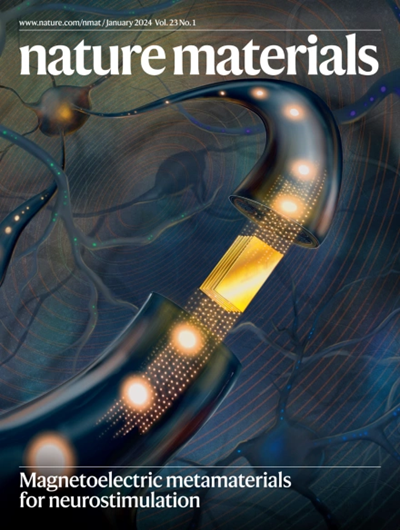高配对双原子催化剂配体限制合成。
IF 38.5
1区 材料科学
Q1 CHEMISTRY, PHYSICAL
引用次数: 0
摘要
双原子催化剂(DACs)具有较高的催化活性和金属利用率,以及结构多样性和广泛的催化位点构型。这些特点使dac成为能源转换技术的有前途的候选者。然而,精确控制原子色散、配对比率和原子间距离——这对它们的多功能催化行为有重要影响——仍然是一个艰巨的挑战。在这里,我们开发了一种配体限制策略,用于精确合成具有可调原子距离的高配对dac。这是通过二胺配体与双金属前体配位来实现的,限制了二维石墨氮化碳上两个金属原子的配对和相对位置。原子对比超过82%,原子对距离由二胺配体的链长控制。作为证明,配对的Pt1-Au1 DACs与未配对的DACs相比,其硝酸还原成氨的催化活性几乎提高了三倍。这项工作为复杂催化剂的原子尺度制造提供了一种有效的策略,并为多相催化的纳米级反应机制提供了有价值的见解。本文章由计算机程序翻译,如有差异,请以英文原文为准。
Ligand-restricted synthesis of highly paired dual-atom catalysts.
Dual-atom catalysts (DACs) exhibit high catalytic activity and metal utilization, alongside structural diversity with a wide range of catalytic site configurations. These features position DACs as promising candidates for energy conversion technologies. However, the precise control over atomic dispersion, pairing ratios and interatomic distances-which critically influence their multifunctional catalytic behavior-remains a formidable challenge. Here we developed a ligand-restricted strategy for the precise synthesis of highly paired DACs with tunable atomic distances. This was accomplished by coordinating diamine ligands with dual-metal precursors, restricting the pairing and relative positions of two metal atoms on two-dimensional graphitic carbon nitride. The atomic pairing ratio exceeded 82%, and the atomic pairing distance was controlled by the chain length of the diamine ligand. As a demonstration, the paired Pt1-Au1 DACs exhibited almost threefold enhancement in catalytic activity for nitrate reduction to ammonia compared with their unpaired counterparts. This work introduces an effective strategy for the atomic-scale fabrication of complex catalysts as well as provides valuable insights into nanoscale reaction mechanisms in heterogeneous catalysis.
求助全文
通过发布文献求助,成功后即可免费获取论文全文。
去求助
来源期刊

Nature Materials
工程技术-材料科学:综合
CiteScore
62.20
自引率
0.70%
发文量
221
审稿时长
3.2 months
期刊介绍:
Nature Materials is a monthly multi-disciplinary journal aimed at bringing together cutting-edge research across the entire spectrum of materials science and engineering. It covers all applied and fundamental aspects of the synthesis/processing, structure/composition, properties, and performance of materials. The journal recognizes that materials research has an increasing impact on classical disciplines such as physics, chemistry, and biology.
Additionally, Nature Materials provides a forum for the development of a common identity among materials scientists and encourages interdisciplinary collaboration. It takes an integrated and balanced approach to all areas of materials research, fostering the exchange of ideas between scientists involved in different disciplines.
Nature Materials is an invaluable resource for scientists in academia and industry who are active in discovering and developing materials and materials-related concepts. It offers engaging and informative papers of exceptional significance and quality, with the aim of influencing the development of society in the future.
 求助内容:
求助内容: 应助结果提醒方式:
应助结果提醒方式:


